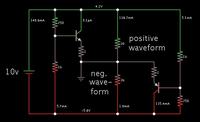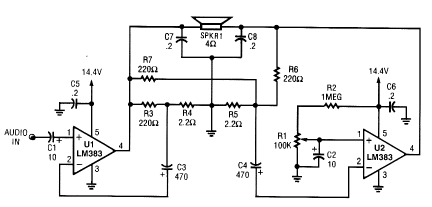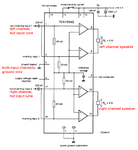trevorg
Newbie level 4
Hi guys,
First post here. I'm just getting into audio amps, plan to build myself a chip amp eventually.
I've been looking at different headphone amp designs using op amps and I've been particularly interested in supply splitting. The basic resistor divider + big caps method seems quite common, but can cause DC offset issues due to loading. I've also seen complimentary regulator designs with 78xx+79xx+reference voltage, but people have noticed potential instability issues.
I'd like to design one with BJT's and I've come up with a simple design that works in my mind but I'm seeking potential problems and suggestions from others.

The transistors are biased always-on in common collector topology with each one allowing current to flow in one direction. The 2Ohm resistors are there to dissipate the energy from the transistor output variations. I figure capacitors should be added from ground to each rail to smooth bumps but I left it out.
Will this design work as a split supply for an op-amp circuit?
First post here. I'm just getting into audio amps, plan to build myself a chip amp eventually.
I've been looking at different headphone amp designs using op amps and I've been particularly interested in supply splitting. The basic resistor divider + big caps method seems quite common, but can cause DC offset issues due to loading. I've also seen complimentary regulator designs with 78xx+79xx+reference voltage, but people have noticed potential instability issues.
I'd like to design one with BJT's and I've come up with a simple design that works in my mind but I'm seeking potential problems and suggestions from others.

The transistors are biased always-on in common collector topology with each one allowing current to flow in one direction. The 2Ohm resistors are there to dissipate the energy from the transistor output variations. I figure capacitors should be added from ground to each rail to smooth bumps but I left it out.
Will this design work as a split supply for an op-amp circuit?




